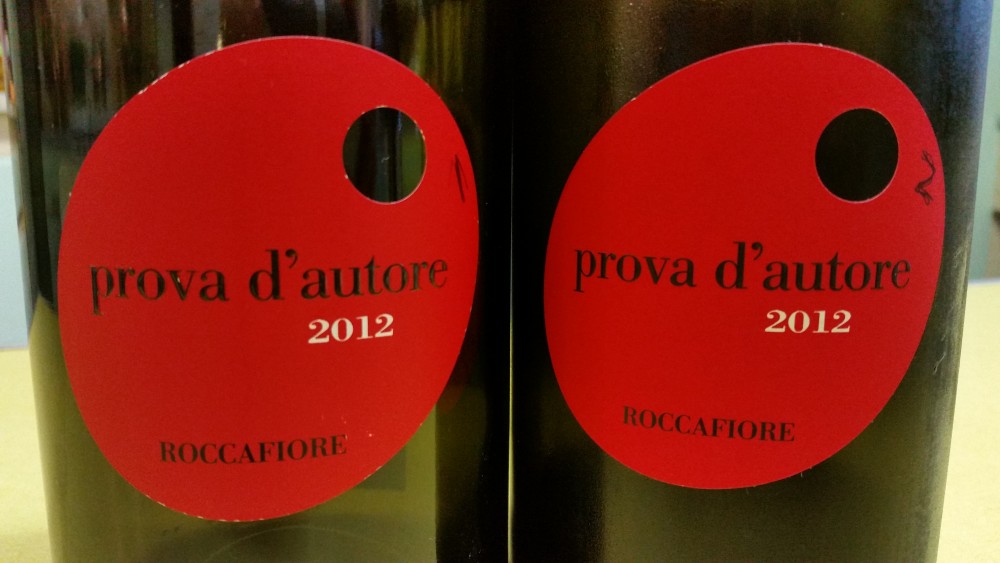What if you tried two bottles of the same wine and they tasted, well…different. How would you evaluate the wine? Well, this is real life, and it just happened to me. I got two bottles of Roccafiore’s 2012 Prova d’Autore, opened them together, and they were not the same. One was distinctly leaner than the other, which means one tasted more acidic and the other seemed more rounded and fruity.
The wine industry term for this is “bottle variation” and it’s probably more common than anyone realizes. I mean, how often do open two bottles of the same wine at the same time?
This Umbria Rosso is organic, made with 40% Sagrantino, 30% Montepulciano and 30% Sangiovese. I did expect some big fruit and nice acidity, and I got that. But in two different ways. There was nicely ripe cherry fruit, a bit of leather and some good tannins in both bottles. But one of the wines had less aromatics and a better integrated body, while the other had more fruit but tasted a little deconstructed to me.
Happily, the wine in both bottles paired well with dinner, which smoothed out their differences to some extent; we had grilled swordfish, homemade onion focaccia and a salad of sweet heirloom tomatoes balanced by tart balsamic vinegar. (Thanks Janice!)
What if this happens to you: you start dinner with one wine, order another next bottle and it’s different? You have every right to send back the second bottle and ask for a new bottle.
